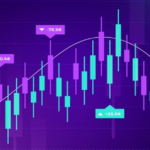In trading, understanding support and resistance levels is crucial for making informed decisions. Moreover, these levels help traders identify potential entry and exit points in the market. Support is where the price tends to stop falling, and resistance is where it tends to stop rising. Using the right indicators can make spotting these levels much easier. Here are seven of the best support and resistance indicators that can help you trade more effectively.
1. Moving Averages
Firstly, moving averages are one of the simplest and most widely used indicators. They smooth out price data to help you identify the direction of the trend. By plotting a moving average on your chart, you can easily see where the price is likely to find support or resistance. For example, the 50-day and 200-day moving averages are commonly used by traders to identify key levels.
2. Fibonacci Retracement
Secondly, Fibonacci retracement levels are based on the Fibonacci sequence. Traders use these levels to identify potential support and resistance areas. By plotting the Fibonacci retracement tool on a significant price move, you can see where the price might retrace before continuing its trend. The key levels to watch are 38.2%, 50%, and 61.8%.
3. Pivot Points
Pivot points are another useful tool for identifying support and resistance levels. They are calculated based on the high, low, and close prices of the previous trading session. The main pivot point is the average of these three prices, and additional support and resistance levels are derived from it. Pivot points are popular among day traders and swing traders because they provide a quick way to see potential levels.
4. Bollinger Bands
Bollinger Bands consist of a moving average and two standard deviation lines plotted above and below it. These bands expand and contract based on market volatility. When the price touches the upper band, it often acts as resistance, while the lower band can act as support. Bollinger Bands are particularly useful for identifying overbought and oversold conditions.
5. Trendlines
Trendlines are a simple yet effective way to identify support and resistance levels. By drawing a line connecting a series of highs or lows, you can see where the price has historically found support or resistance. Trendlines can help you identify the overall direction of the market and potential reversal points.
6. Ichimoku Cloud
The Ichimoku Cloud, also known as Ichimoku Kinko Hyo, is a comprehensive indicator that shows support and resistance, trend direction, and momentum. The cloud itself represents potential support and resistance areas. When the price is above the cloud, it indicates a bullish trend, and when it’s below the cloud, it indicates a bearish trend. The Ichimoku Cloud can seem complex at first, but it’s a powerful tool once you understand it.
7. Relative Strength Index (RSI)
Finally, the Relative Strength Index (RSI) is a momentum oscillator that measures the speed and change of price movements. RSI values range from 0 to 100, with levels above 70 indicating overbought conditions and levels below 30 indicating oversold conditions. When the RSI approaches these extreme levels, it can act as support or resistance, signaling potential reversal points.
Conclusion
In conclusion, using support and resistance indicators can greatly enhance your trading strategy. The indicators mentioned above are all valuable tools that can help you identify key levels in the market.
If you’re looking for reliable broker reviews, check out Brokerreviewfx. We provide comprehensive reviews of brokers to help you find the best one for your trading needs. Start using these support and resistance indicators today and improve your trading performance!












0 Comments